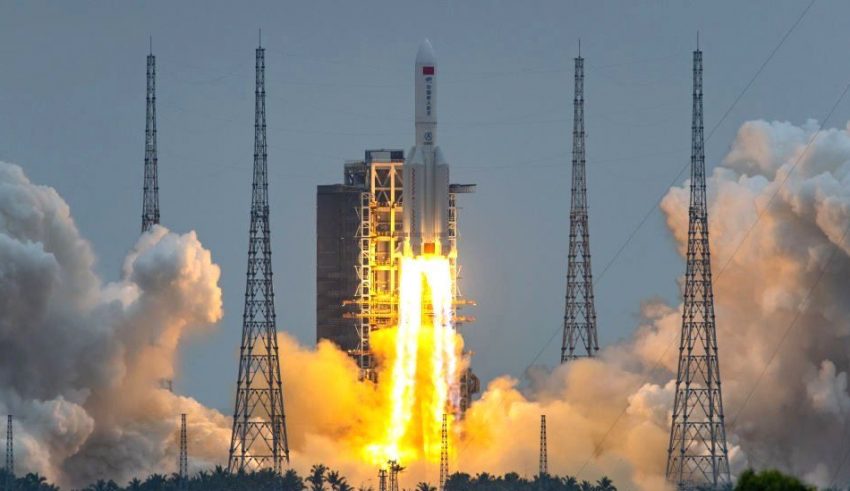
China has launched a key module of a new permanent space station, the latest in Beijing’s increasingly ambitious space programme.
The Tianhe module – which contains living quarters for crew members – was launched from the Wenchang Space Launch Centre on a Long March-5B rocket.
China hopes to have the new station operational by 2022.
The only space station currently in orbit is the International Space Station, from which China is excluded.
China has been a late starter when it comes to space exploration. It was only in 2003 that it sent its first astronaut into orbit, making it the third country to do so, after the Soviet Union and the US.
So far, China has sent two previous space stations into orbit. The Tiangong-1 and Tiangong-2 were trial stations though, simple modules that allowed only relatively short stays by astronauts.

The new, 66-tonne, multi-module Tiangong station is set to be operational for at least 10 years.
Tianhe is the core component of it. It is 16.6m long and 4.2m wide. It will provide power and propulsion and contains the life support technologies and living quarters required by visiting astronauts.
Beijing plans to have at least 10 more similar launches, carrying all the additional equipment into orbit, before the completion of the station next year. It will orbit Earth at an altitude of 340 to 450km (210-280 miles).
The only current space station in orbit is the ISS which is a collaboration between Russia, the US, Canada, Europe and Japan. China has been blocked from participating in it.
The ISS is due to be retired after 2024, which could potentially leave Tiangong as the only space station in Earth’s orbit.

China’s space programme has become a regular feature in the country’s propaganda videos and, in a way, why wouldn’t it?
After a high-speed catch up with other nations, it now has bold ambitions beyond Earth.
Having been frozen out of the International Space Station programme by the US, Beijing just decided to build its own.
When the Tiangong station is up and running – possibly as early as next year – though it will be only a quarter of the size of the international facility, no other country will have its own orbiting space lab.
There is talk here of missions to Mars and a lunar station with Russia.
The comparison with the Cold War space race is clearly there to be made: legitimate scientific ambitions mixed up with international mistrust, the potential militarisation of space and key projects being hailed as new benchmarks to justify the enormous amounts of money being spent.
China’s ‘space dream’
Chen Lan, an analyst who specialises in China’s space programme, had told news agency AFP that the project was a “big deal”.
“This will be the largest international space co-operation project for China, so it’s significant,” he said.
China has in recent years made no secret of its space ambitions.
China has poured significant funding into its space efforts, and in 2019 became the first country to send an uncrewed rover to the far side of the Moon.
President Xi Jinping has also thrown his support behind the country’s space endeavours and the Chinese state media regularly cast the “space dream” as one step in the path to “national rejuvenation”.
Source: bbc.com

















